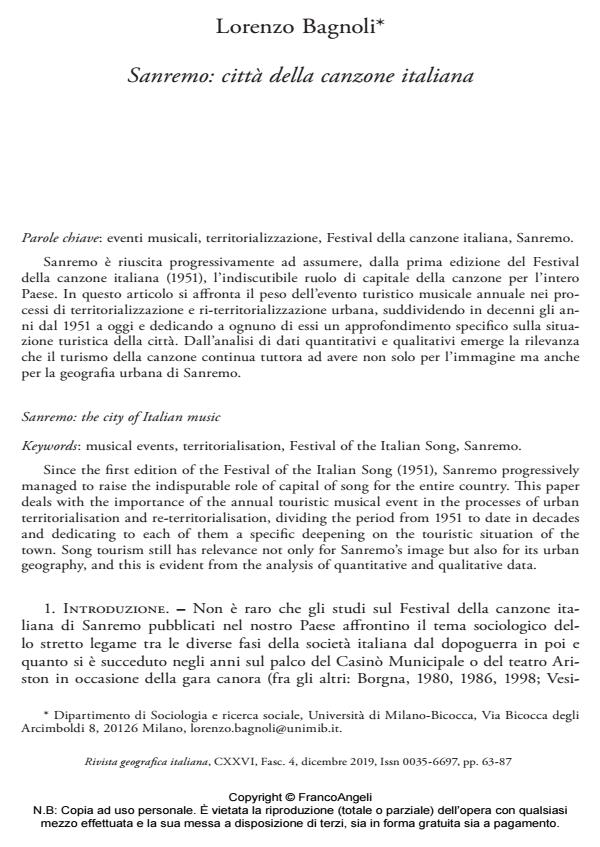Sanremo: città della canzone italiana
Titolo Rivista RIVISTA GEOGRAFICA ITALIANA
Autori/Curatori Lorenzo Bagnoli
Anno di pubblicazione 2019 Fascicolo 2019/4
Lingua Italiano Numero pagine 25 P. 63-87 Dimensione file 145 KB
DOI 10.3280/RGI2019-004004
Il DOI è il codice a barre della proprietà intellettuale: per saperne di più
clicca qui
Qui sotto puoi vedere in anteprima la prima pagina di questo articolo.
Se questo articolo ti interessa, lo puoi acquistare (e scaricare in formato pdf) seguendo le facili indicazioni per acquistare il download credit. Acquista Download Credits per scaricare questo Articolo in formato PDF

FrancoAngeli è membro della Publishers International Linking Association, Inc (PILA)associazione indipendente e non profit per facilitare (attraverso i servizi tecnologici implementati da CrossRef.org) l’accesso degli studiosi ai contenuti digitali nelle pubblicazioni professionali e scientifiche
Sanremo e riuscita progressivamente ad assumere, dalla prima edizione del Festival della canzone italiana (1951), l’indiscutibile ruolo di capitale della canzone per l’intero Paese. In questo articolo si affronta il peso dell’evento turistico musicale annuale nei processi di territorializzazione e ri-territorializzazione urbana, suddividendo in decenni gli anni dal 1951 a oggi e dedicando a ognuno di essi un approfondimento specifico sulla situazione turistica della citta. Dall’analisi di dati quantitativi e qualitativi emerge la rilevanza che il turismo della canzone continua tuttora ad avere non solo per l’immagine ma anche per la geografia urbana di Sanremo.
Parole chiave:Eventi musicali, territorializzazione, Festival della canzone italiana, Sanremo.
Lorenzo Bagnoli, Sanremo: città della canzone italiana in "RIVISTA GEOGRAFICA ITALIANA" 4/2019, pp 63-87, DOI: 10.3280/RGI2019-004004